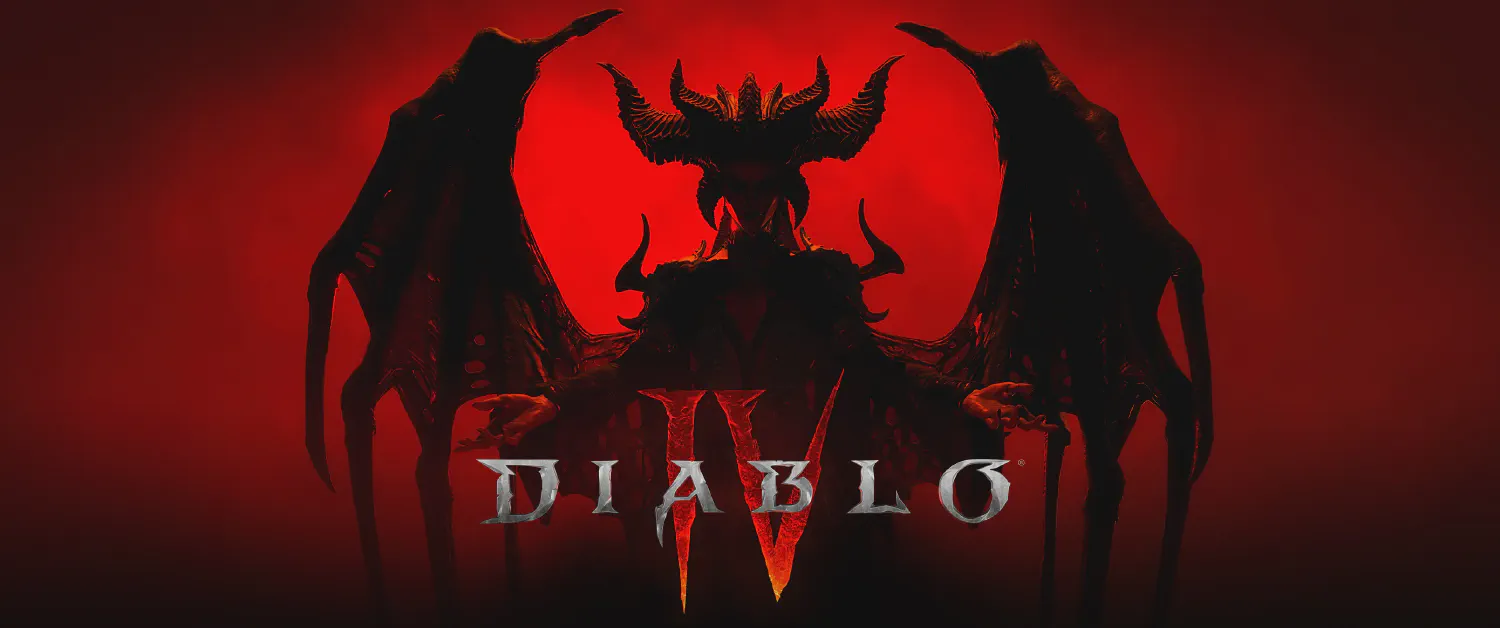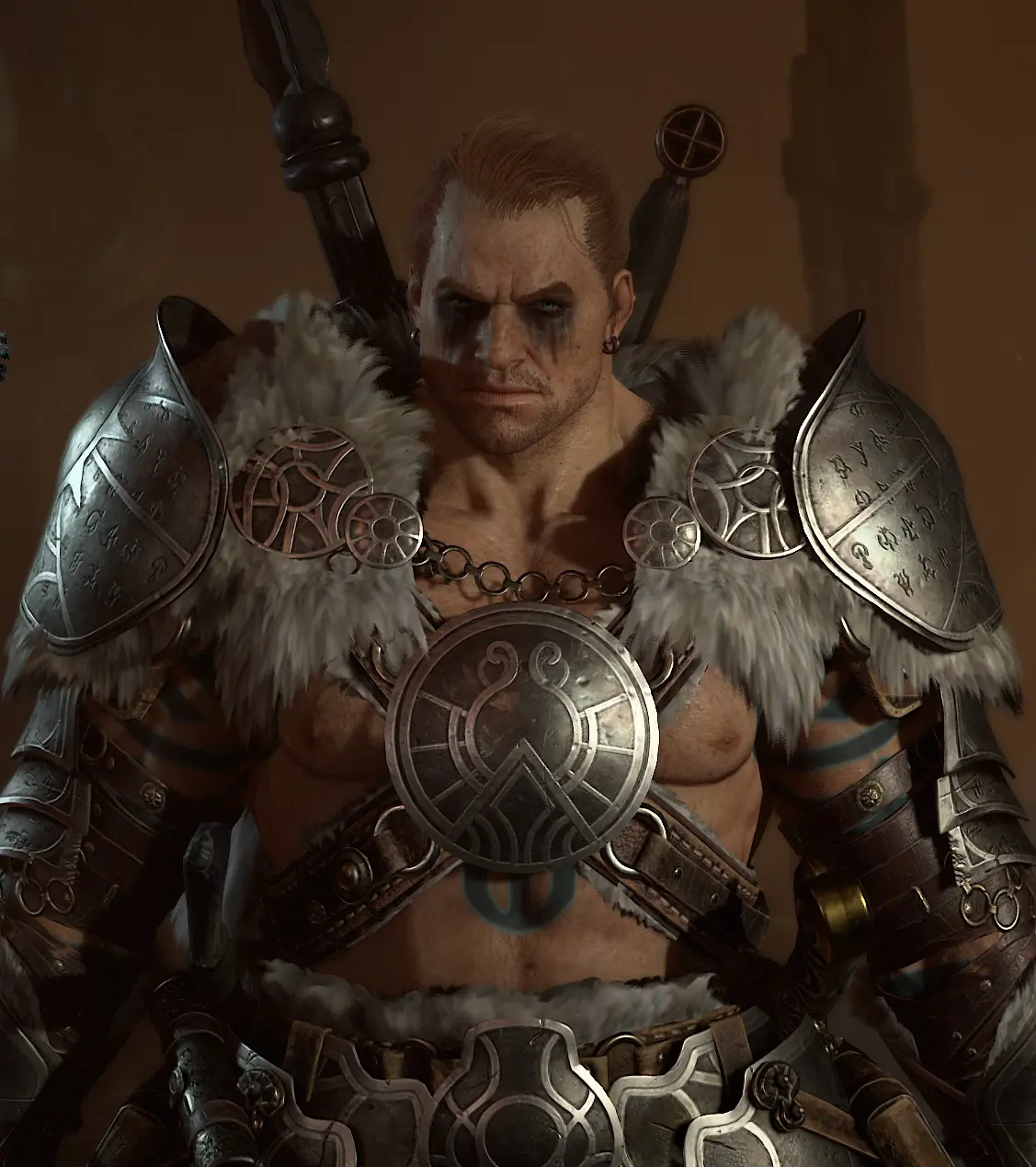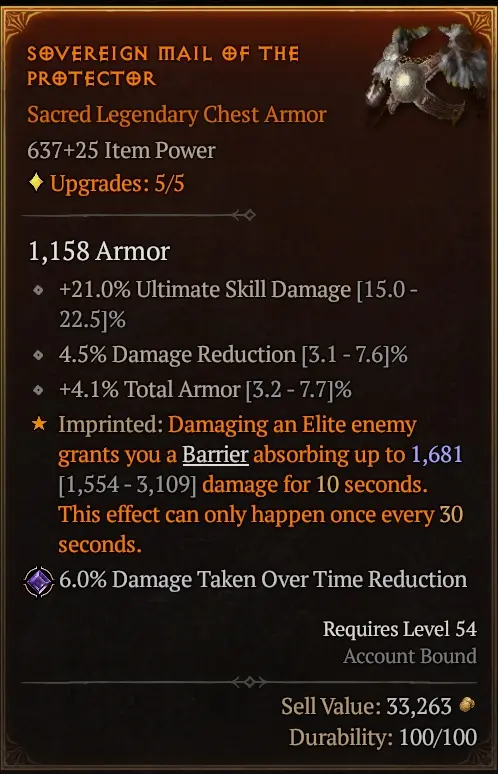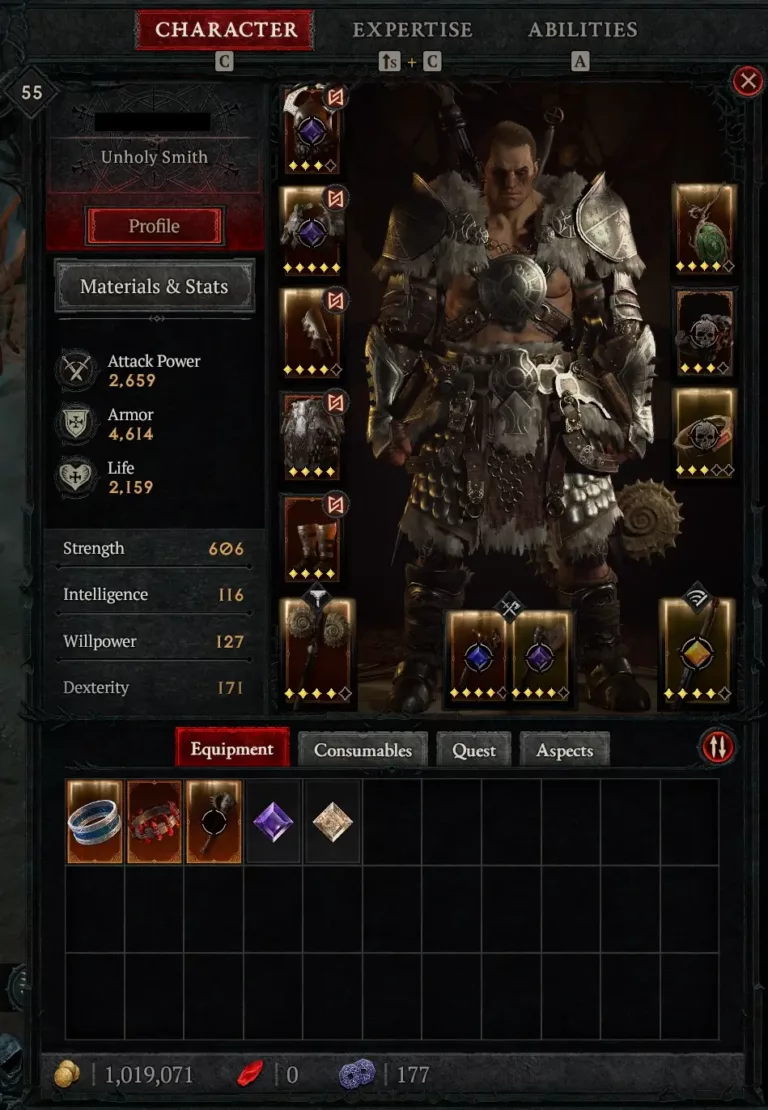Diablo IV - An Overcomplicated Sequal to the Diablo Franchise

| Author: | Brian Powell Jr |
| Date: | June 18, 2023 9:45:00 am EDT |
| Last Updated: | June 1, 2024 9:01:59 pm EDT |
| Read Time: | 14 min read |
| Tags: |
Game Details
| Genre | Developer | Publisher | Release Date | Reviewer's Sentiments |
|---|---|---|---|---|
| Action RPG | Blizzard | Blizzard | 2023-06-05 | Not Recommended |
Summary
Diablo IV takes places some decades after the events of Diablo III. All of the previous cast of characters are noticeably absent and the world has more or less gone to hell in a handbasket after an ex-Horadrim resurrects the daughter of Hatred, Lilith. The overarching theme of the game is the battle of the High Heavens versus Hell as father of humankind, the archangel Inarius, leads the newly formed Cathedral of Light against the mother of humankind, Lilith. When the dust settles at the end of 6 Acts both are dead and a young girl runs off with a soulstone containing the essence of the Prime Evil Mephisto.
Diablo IV tried to bring some major changes to the franchise by way of adding an open, MMO-style world and changing up the item system to have more quality tiers. In my opinion, though, this largely just fell flat on its face. I will elaborate more on this below in The World and The Itemization. The game offers some levels of fun and I do play it kill time, but overall I am unhappy with the product that was delivered. This game has a neutral recommendation from us as it is enjoyable, at times, but it’s also overly complicated and full of bugs.
The Story
The sections below will contain spoilers. If you want to avoid the spoilers, the main points of the story are summarized in Summary.
The Beginning
Diablo IV begins with your character being a lone wanderer traveling through the frozen mountains of The Fractured Peaks (the region around Mt. Arreat in Diablo III’s Act III). Through a series of unfortunate events your horse is killed and you are about to die in a cave from the cold until a demonic wolf motivates you to seek better shelter. You travel to a nearby village where the people trick you into saving them from a demonic presence in some nearby ruins.
When you return the village people celebrate your victory and drug you. While unconscious you get hauled back to a barn where you are feed the blood of Lilith and are prepared for a ritual sacrifice. You are saved by a monk you met in the village and end up massacring the village. You and monk inspect the local church and it is at that point you discover that the blood you were fed gave you a connection to Lilith.
You depart the village in search of a man named Lorath. You later learn that Lorath is a member of the secret mage group in charge of defending Sanctuary, the Horadrim. After you and Lorath share a dinner you head off for the major city in the area. It is there Lorath sends you off to start your journey while he goes to investigate some of the information you shared with him. It is at this point that Act I begins and you help out the Cathedral of Light, a religious faction, in their issues.
The Middle Part
You venture off into the Dry Steppes (part of Diablo III’s Act II) and Scosglen (an United Kingdom accent zone). You catch back up with Lorath and meet another ex-Horadrim Donan. Your adventures in Scosglen are focused on helping rebuild the land by driving back the goatmen and helping the druids remedy things. Scosglen ends with Donan’s only son being sacrificed to bring a demon back to Sanctuary that Donan worked to seal away years ago in a soulstone.
In the Dry Steppes, you and Lorath go on a journey to learn more about the man who resurrected Lilith. It is at this point it is revealed that this man is also ex-Horadrim and a pupil of Lorath’s named Elias. Through a long series of events you track down Elias and interrupt a ritual to summon Andariel, a Lesser Evil and Maiden of Anguish, to Sanctuary. Though you stop the ritual, Elias finds where you and your group are hiding and completes the ritual. Vanquishing Andariel sets up the beginning of the end of the story as you travel to the southeastern zone of Hawezar.
The Ending
In Hawezar you discover the secret to defeating Elias and reforge the soulstone needed to seal away Lilith. In an act of desperation, Lorath makes a deal with the Tree of Whispers to learn where Lilith plans on opening a gateway to Hell. At the same time, Inarius and the Cathedral of Light march on the desert city of Caldeum to purge the religious heretics and chase after Lilith. The road to Caldeum is lined with crucifixes and dead bodies as the Cathedral marches on in their Holy Crusade.
In Caldeum, Inarius steals the soulstone from you and means to use it himself against Lilith. Not discouraged, you convince the Cathedral troops to let you march with them through the city to get to the Hell gate. During this battle you get separated and end up fighting Duriel, another Lesser Evil and Lord of Pain, as a mini boss fight.
Once in Hell, you follow in the wake of the Cathedral’s march and observe the devastation that ensued. You find their leader, Reverend Mother Prava, unconscious on the ground and discover that she was carrying the soulstone. You press on and learn that Inarius was killed by Lilith. Fearing for his life, a weakened Mephisto opens a portal to his temple where one of your followers decides it is better to seal him in the soulstone instead of Lilith. An aspect of Mephisto opens a portal and your follower escapes while you stay behind to fight Lilith. A fight ensues and you ultimately come out on top. Lilith expresses her disappointment in you for essentially continuing the Eternal Conflict and then turns to ash.
You return to Lorath and a dying Donan to learn that the girl that sealed Mephisto away did not return to Lorath. Through a brief Epilogue quest you learn that she ran away with the soulstone and left a letter for Lorath instructing you to not follow her. At the same time the Cathedral of Light brands you and the Horadrim as heretics. You travel to the Cathedral and slay the remaining Knights Penitent in the Cathedral and unlock the end game content.
The World
The world in Diablo IV is very well crafted. The regions within them contain multiple biomes to really give the world a more natural and realistic feeling. The world is also fairly large and takes a long time to run across. This is combated in two ways: multiple waypoints and a horse you can ride. The waypoints are typical Diablo-style ones were you run up to them and activate them. A few of them, though, require you to clear enemy strongholds to unlock. After you complete the first three Acts you get to unlock a horse mount. The mount allows you to move faster and also reduces enemy aggro (you can go past them without them chasing). I struggle to see the true value of the mount, though, as you can get pretty much where you want using the waypoints.

One benefit of this connected world they crafted is that you no longer have to change the Act you want to play to go do something. You simply just log in and go. The downside is that they decided to make this a more multiplayer-friendly game by forcing you play with other people on the map.
Part of this is because their are PvP zones on the map. I briefly interacted with the PvP zone as I was passing through to unlock part of the map, but you collect Seeds of Hatred from killing other players and can redeem them for stuff. While in PvP zones there status effects applied to everyone.
The major downside to the always online world is that it causes issues with rubberbanding when in the hub cities. I don’t have the worst Internet connection in the world, but it’s also not a fiber connection. Depending on your area, you are at the mercy of their server resources and capabilities. Some people have connected they have no issues while others say the game is literally unplayable.
As much as I would love to see the always online part of the game disappear, I doubt that will ever happen. A large chunk of the endgame content is built on this system in the way of World Bosses, Helltides, and Tree of Whispers bounties. People supposedly have fought World Bosses, but I’ve never seen an indication for when it is spawning in the world nor has Blizzard published (at the time of writing this article) a schedule for when these World Bosses spawn. Helltides occur pretty frequently and offer you a means of fighting enemies in a region to get Abhorrent Cinders which is traded in for gear. Tree of Whispers bounties are areas with special events or enemies where you earn grim favors in exchange for loot.
The Visuals
The visual style of Diablo IV is one of gore and duller colors. This is in contrast to the color scheme used for Diablo III. Everything about the world feels darker from the corpses everywhere to the colors that compose the scenery. The level of detail shown on the character models in the game are also a welcome update. After a while looking at the blurry face of the Diablo III characters made the game feel old. The armor style used also feels like it more appropriately fits the setting of the game. In the image of the barbarian shown to the left, this armor is a piece of high level legendary gear.

While they made great changes to the game, this direction to be dark was also somewhat intolerable at times. The second cinematic in the game is you literally watching a priest getting lynched after Lilith awakens them to embracing sin and casting aside the Cathedral. This theme persists in another cinematic later on in the game where you also watch a still alive monk get eaten by wolves while Elias and Lilith just have a conversation about their grand plans. The set pieces in the world too have copious amounts of gore from disemboweled horses and prisoners to bodies ripped in half with their spines hanging out. After a while it just becomes uninteresting to look at kind of like watching the same fatality in Mortal Kombat over and over again.
The Itemization
General Itemization Discussion
At the heart of an ARPG is loot. Everything revolves around finding better loot to make your character stronger to overcome harder challenges. Diablo IV, though, went ham and made things overcomplicated to the point that the vast majority of gear is useless. Even while leveling through the campaign I found it more beneficial to carry around an item that was 10 levels below me simply because it was the only item that offered a significant amount of the main stat for the Barbarian, strength. Sure the damage was terrible, but switching to the higher DPS items would lower my overall attack power and armor value. That effectively made me worse off.
An unfortunate feature that worked itself into Diablo IV was the largely irrelevant item/gear score system. In just about every game I’ve played that used it, the value was just some mathematically computed number that really was misleading on how much better the item was. If you blindly followed the item score value you’d think it was an upgrade. Fortunately, you have the option to enable advanced tooltips on items to more closely evaluate how good the stats that rolled on the item were. This is off by default which is fair because it does make the interface a bit more messy adding +, x, and % signs along with value ranges everywhere.
Diablo IV seems to have taken a page from the Borderlands’ playbook, but the key difference here is that Borderlands 10 stats items have a role on impacting. In contrast, Diablo IV has over 35 stats that are influenced by items. On the surface it gives the appearance that there is more possible diversity on ways to play a character, but to fully harmonize everything you are going to grinding stuff out forever. Having played endgame content at World Tier 3 for about 4 levels the only thing different I got was Sacred tiers of items. Sacred items are an elevated version of a similar item at the same rarity. They also wanted to expand upon the item rarity system as apparently 6 tiers of loot wasn’t good enough. Instead of having:
- Junk (Gray)
- Common (white)
- Magic (Blue)
- Rare (Yellow)
- Legendary (Orange)
- Set (Green)
They decided to add another level between Legendary and Set items called Unique. What this ended up doing is making Legendary items no longer that special, but they do have the added benefit of having special affixes added to them that provide enhancements to the player’s skills or add passive effects. Items also no longer suffer durability losses from general use so durability is just a death penalty system. Honestly, it would have just made more sense to just copy what Borderlands did and make you pay a penalty at the time of death because you can completely avoid paying the gold penalty by upgrading your gear and then either selling or salvaging it. This begs the question: Why even have a durability system?

Crafting
Crafting is a hollow shell of what it was in Diablo III. Instead of gathering resources to create new and powerful items, crafting is now just strictly improving existing items. They also have added more crafters to do various things. One of the things I dislike about this new crafting system is that it’s unexciting and boring. You know exactly what you’re going to get when upgrading an item as it shows you what the changes will be before you upgrade. Crafting also now utilizes some 30+ resources. I don’t want to say the crafting system feels like a phone game, but it’s not the most enthralling either. This is a negative mark against the game as the crafting/upgrading system is, from my observations, a core part of the gameplay that is just very bland.
Another irritating part of this is once you progress a bit into World Tier 3 the game unlocks the ability to craft Nightmare Sigils. These items function similar to Diablo III’s Great Rift stones in that it increases the difficulty of a particular dungeon with special conditions. Crafting sigils requires you to collect another one-off crafting resource. The rarity of the resource isn’t a big deal, but the issue arises at the time you want to craft a new sigil. This system has three levels of randomness. The first is the level range for the sigil (which is broken up into groups), second is the dungeon it is applied to, and finally what special conditions are active for the dungeon. Unlike the range it is applied it could be, you have zero choice in what dungeon the sigil is crafted for and what special conditions you get.
Inventory Management
On the surface it feels like Diablo IV gives you more storage, but not really. If you look at the character card, you have 4 tabs of 33 slots each. Each tab is for specific things: Gear and Gems, Consumables, Quest Items and Salvaged Legendary Aspects. Generally speaking this is okay, at least at the time of writing this article, except their are some many gems that drop that you can easily waste half your inventory space on collecting gemstones. Not picking them up puts you in a tough spot for later on as you need three of a type to upgrade it. Supposedly they are working on adding a separate tab for gems, but we will have to wait and see.
The consumables tab contains all of your elixirs (and there’s several of them), Whispering Keys, and Sigils. The elixirs and whispering keys stack, but the sigils do not. This is due to the fact that each sigil for a dungeon is different in terms of difficulty level (tier) and dungeon affixes/challenges. There are more dungeons in the game than consumable stash tabs for your character so you’re going to have to go back and forth from your inventory to store or retrieve what you want. This then leads to an issue with your stash as you only can have 150 total slots after fully upgrading and you use the stash to share items across all characters.

The Unpolished
One of the things that has irritated me throughout the time I’ve been playing the game is the apparent lack of QA. You have bugs where certain enemies and objects cannot be hit due to Z positioning. Sometimes enemies also spawn underground. You also have issues were features just don’t work as intended. The initial issue I discussed is an issue for melee characters as you have to use the “attack in place” command (hold shift and press the skill button). The issue with this is you cannot use your skill assigned to 1 as your finger is busy holding Shift. The skill by default assigned to 1 is usually a defensive skill so good luck.
A recent issue I encountered was fighting the World Boss was supposed to award me 5 grim favors to be redeemed at the Tree of Whispers. Upon defeating the boss I got the loot (which was mediocre), but the grim favors were not awarded. After checking with a few other players online at the time it seemed like I was having the opposite experience. This isn’t necessarily game breaking, but when this is a core part of the endgame activities it’s frustrating to see they didn’t even ensure this worked reliably but want to patch dungeons so one isn’t more “farmer friendly” over others.
The ironic thing about all of this is they released the game a day earlier than anticipated/planned, but it has so many bugs that I get the feeling this launch was forced regardless of whether it was ready or not.
